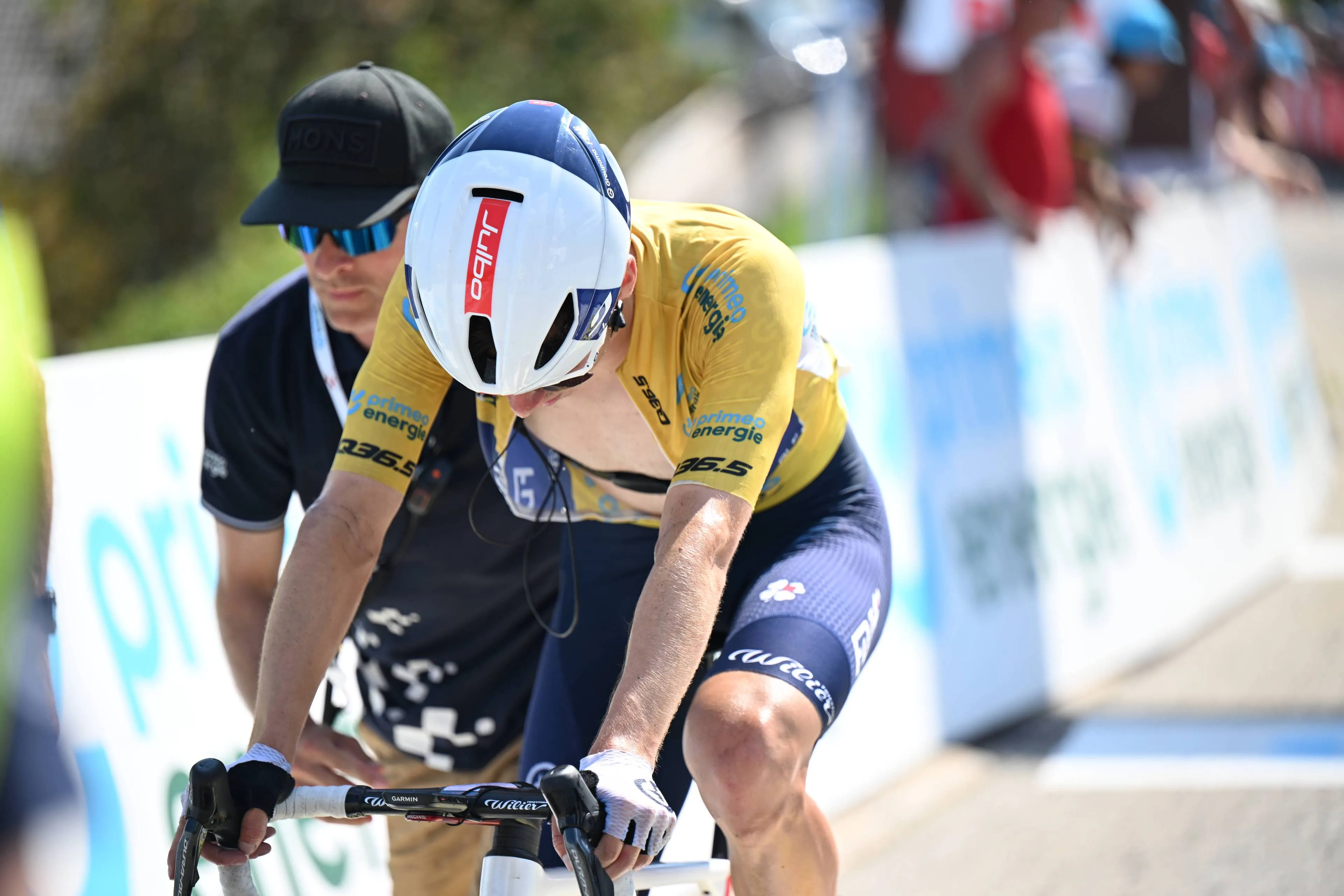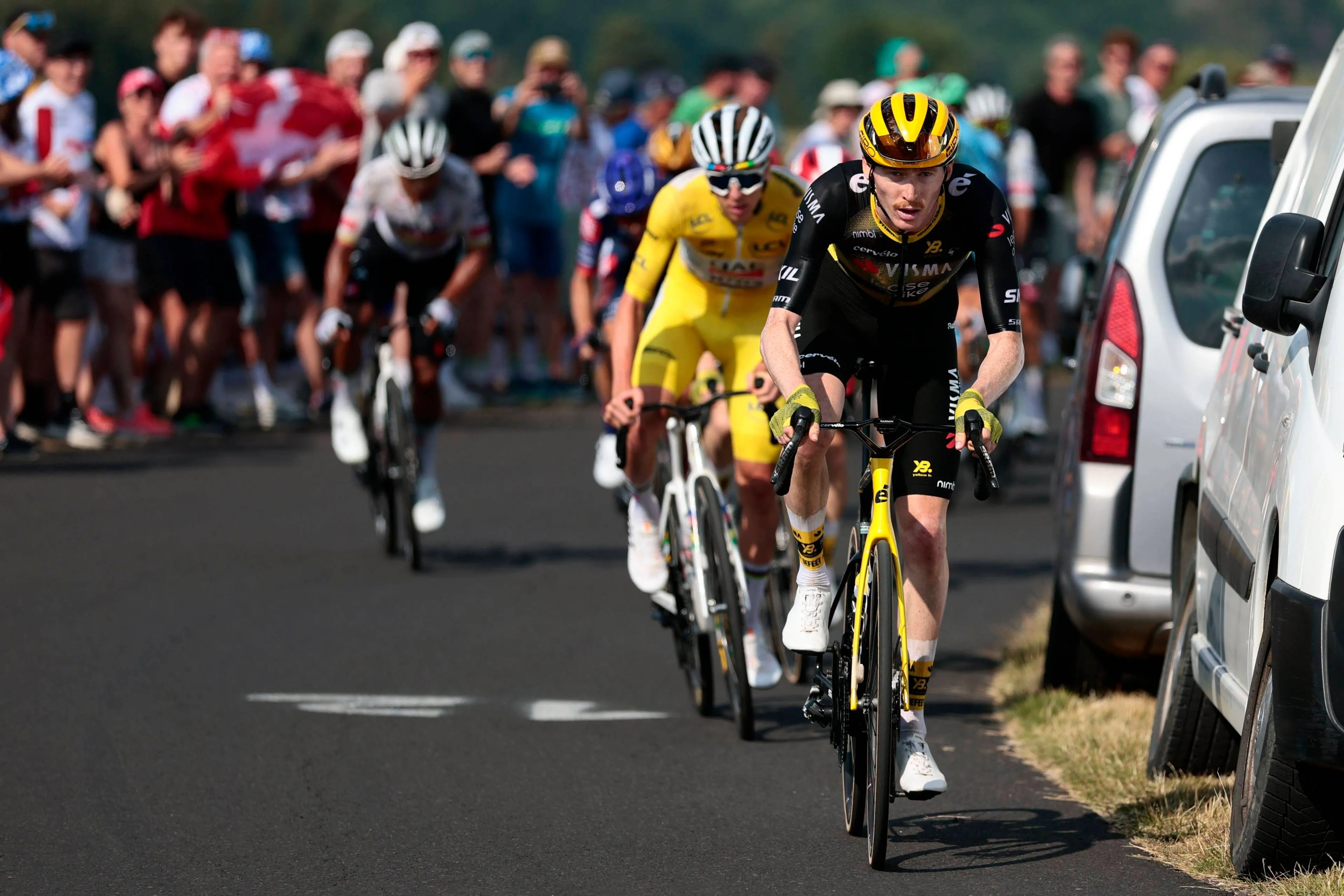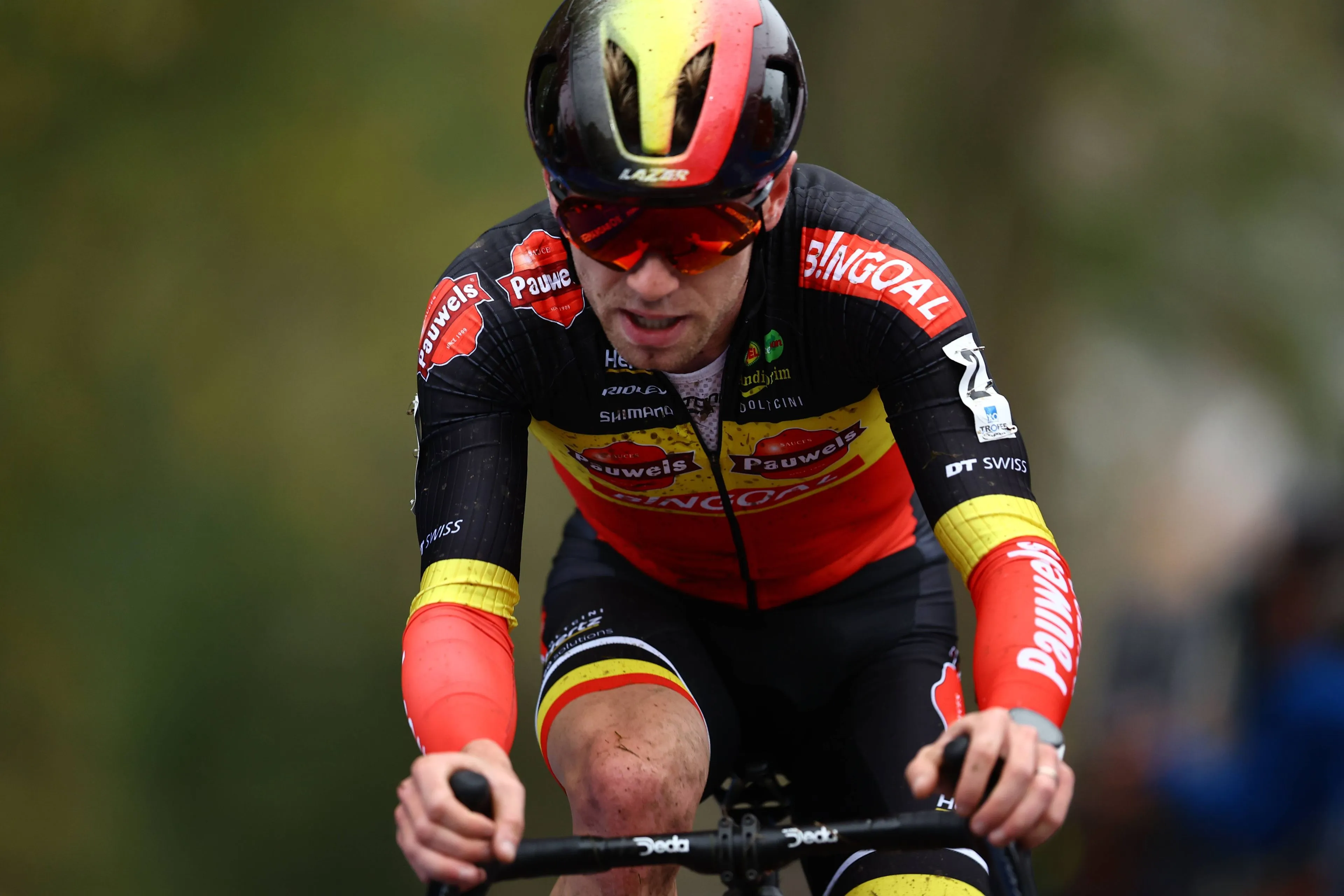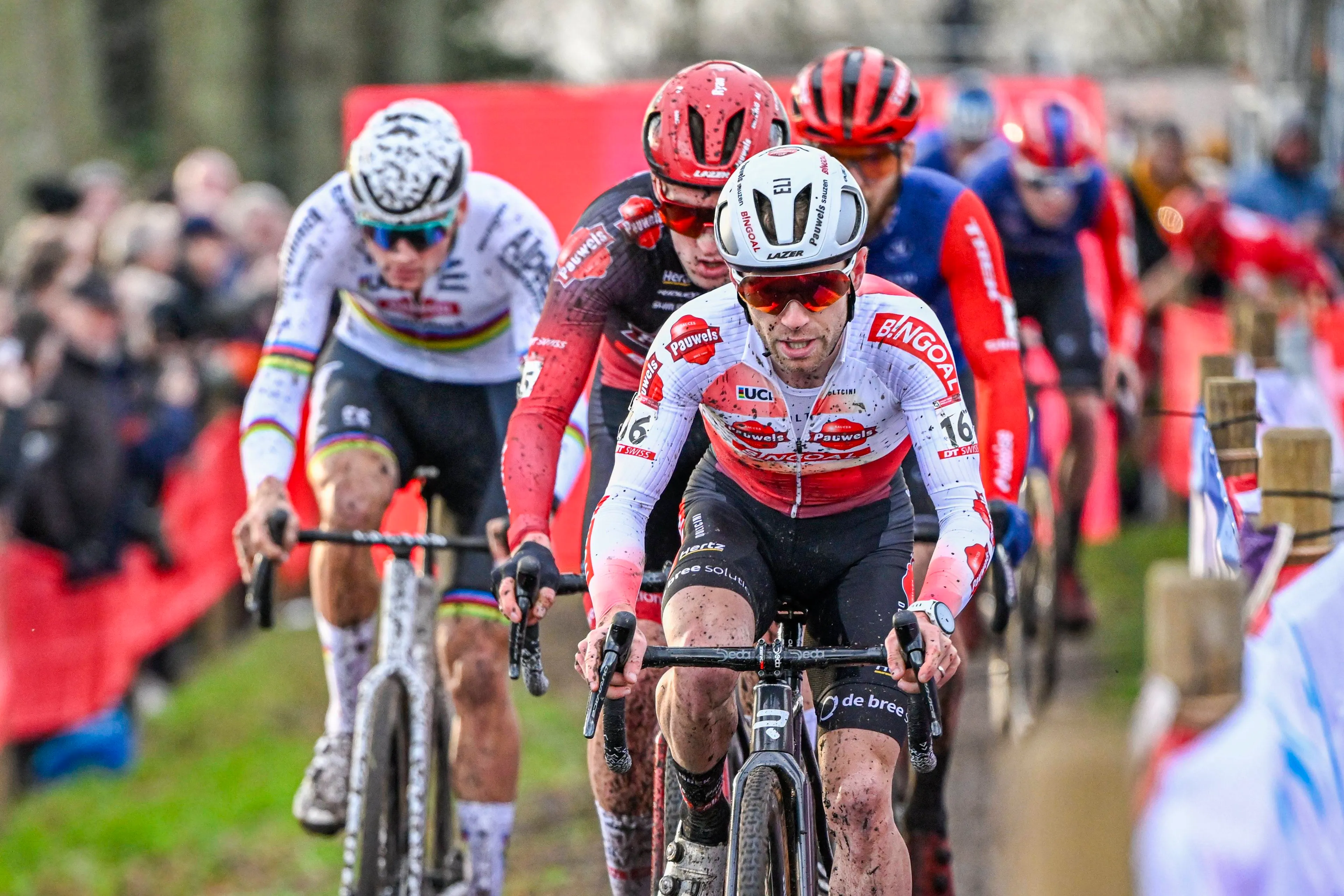Baloise Belgium Tour introduces new safety measure on the week of Gino Mader’s anniversary: “We hope that it will never have to happen”
CyclingFriday, 20 June 2025 at 09:45
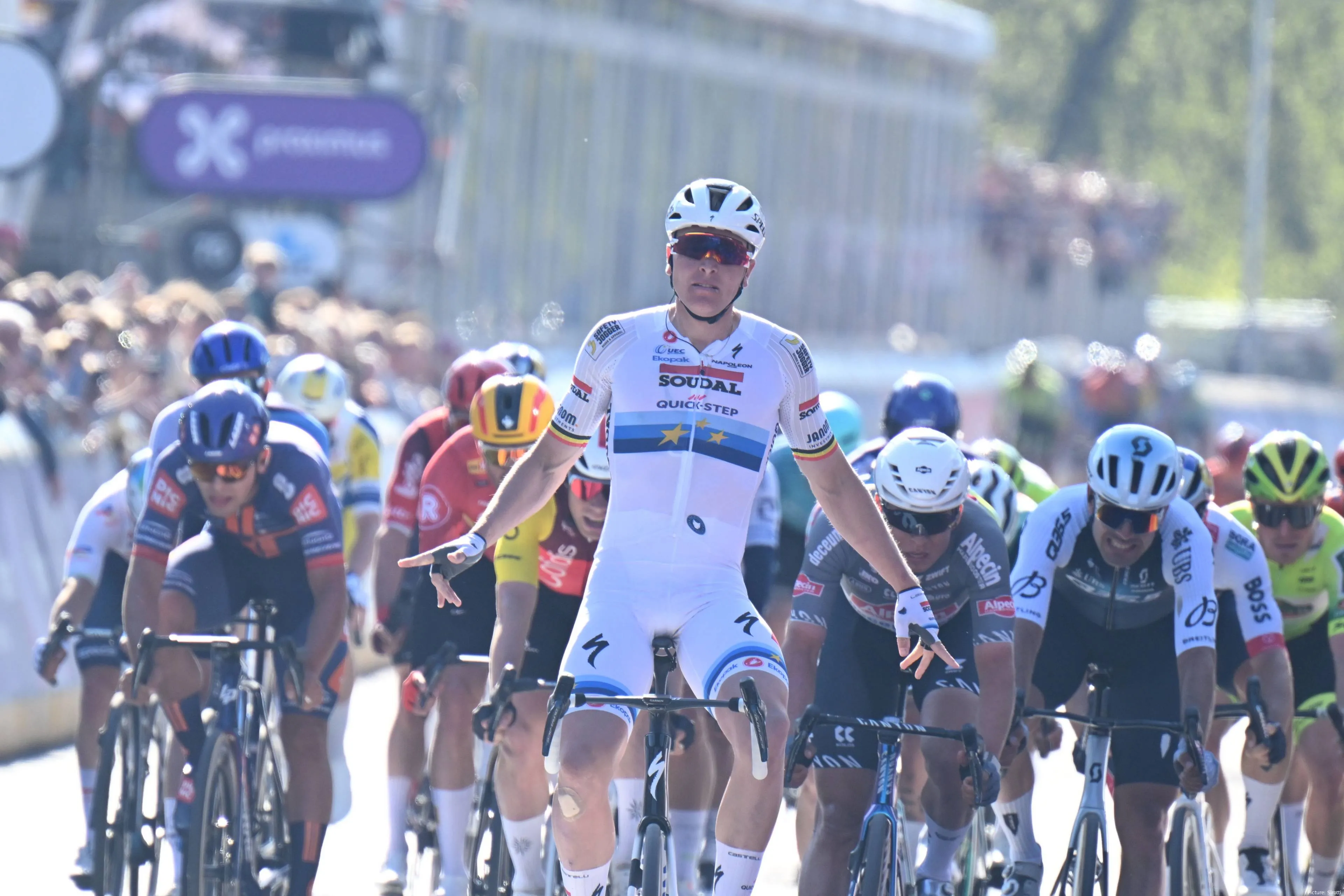
This week marked two years since the tragic death of Gino
Mäder at the 2023 Tour de Suisse, a sombre reminder that no matter how far the
sport advances, road cycling remains unforgiving. His crash, which occurred on
a high speed descent of the Albula Pass during
Stage 5, brought renewed attention to rider safety.
Now, during the very same week on the calendar, attention
has turned to a promising safety innovation at the Baloise Belgium Tour.
Organiser Golazo has introduced what it calls the “Safe Cycling Finish Barrier,”
an inflatable, air-cushioned barrier designed to offer a softer landing in the
event of a crash during a sprint finish.
Read also
“We have developed this Safe Cycling Finish Barrier together
in recent months,” Christophe Impens of Golazo told Wielerflits. “As the word
itself says, it is an installation to make the finish, especially in mass
sprints, even safer.”
What sets this solution apart is not just its design, but
its portability. “It is about 250 meters of safety equipment, all of which fits
in the trunk of a car,” said Impens. “With a station wagon or small van and two
people, you can now secure the entire finish line of a cycling race.”
That compactness is crucial. Many current safety
installations, whether metal barriers, fencing, or traditional padding, require
significant manpower and time to set up. This barrier, by contrast, can be
deployed quickly, offering logistical convenience without sacrificing
protective value.
Read also
Impens acknowledged the harsh realities of high-speed
crashes, stating: “Of course we hope that it will never have to happen, but if
you do fall into the barriers, you will end up in a very thick air mattress, so
to speak. You fall a bit softer, although hitting the ground in a mass sprint
at 70 kilometers per hour will never be comfortable.”
The technology was quietly tested earlier this week in
Knokke-Heist and Putte. "We only picked up the equipment from customs on
Tuesday. But the first test upon arrival in Putte went very well," Impens
said.
The larger question is whether innovations like these will
become standard across WorldTour events. The sport has a mixed track record
when it comes to rapidly adopting safety improvements. While there have been
changes, more netting on descents, better helmet standards, revised sprint
regulations, fatal crashes continue to occur in road races and sometimes
training too.

The cycling world remembers Gino Mader two years on
Golazo’s ambitions extend beyond the finish line. “Perhaps
that large air mattress is the start of many more inflatable developments that
can increase the safety of the riders,” Impens added. “It is our intention to
also apply that at dangerous bends, at a crossroads with obstacles or in
descents. All you need is a generator.”
Inflatable barriers at descent apexes or urban intersections
may sound ambitious, but they could represent the next logical step. When
riders descend at over 80km/h, a split second misjudgment or mechanical failure
can be fatal. Foam padding and netting can only do so much; better solutions
are needed.
Read also
But as always in cycling, safety innovations often hinge on
visibility and cost, and a high profile crash can catalyse change. The death of
Wouter Weylandt in 2011 led to improved race neutralisation procedures and
medical access, and Fabio Jakobsen’s horror crash in 2020 prompted a rethink on
finish line barriers.
The real test for Golazo’s inflatable system will come when
it is used in a top-tier race and, perhaps inevitably, in a real crash. Jasper
Philipsen was close to a nasty crash on stage 1 of the Baloise Belgium Tour,
but just managed to stay upright. Whilst no one wishes any crashes upon the
riders, we will not know how effective this system is until we see it in use.
claps 0visitors 0
Just in
Popular news
Latest comments
- Wow, sad and unlucky indeed if he can’t even cycle recreationally as a result of this.mobk09-01-2026
- That's right, Giannetti said that Almeida and Ayuso asked to go to the 2024 TdF. They told them that Tadej was the only captain then if they went, they would be domestiques. Both accepted. Almeida kept his word, but Ayuso was a traitor. As soon as he realized he couldn't play his game , hiding at the back of the peloto, watching his classification, he got "COVID" (in summer, at 40 °C), leaving his team with a man less.
 maria2024202409-01-2026
maria2024202409-01-2026 - if anyone can compete with Tadej and Mathieu that is.mij09-01-2026
- no one has an answer for those twomij09-01-2026
- sorry for him, must be toughmij09-01-2026
- just a boneheaded move to watch yates ride away in that initial 100m of his attack. it wasn’t that blistering. Del Toro and Carapaz just watched with no response.mij09-01-2026
- Health comes first on every occasion, for the sport this is disappointing I can't imagine how disappointing is for Eli. Wish him all the best.slappers6609-01-2026
- Starting all 3 vs finishing all 3, which makes what Sepp Kuss did in 2023 very impressive.
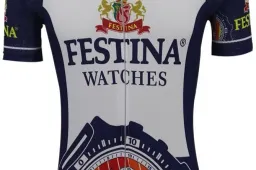 Front24209-01-2026
Front24209-01-2026 - It'd be good to see these back on the Classics 👍
 leedorney09-01-2026
leedorney09-01-2026 - it will be interesting to see his results when he steps into the bigger races. 19 wins, but so many in the fall in mid level races. still the mid races need to be won to step up to the biggies.mij09-01-2026
Loading
Write a comment

